Five Essential Spices in Central Asian Flavors
38 min read Discover five essential spices shaping Central Asian flavors with Mongolian context, and how to use them to enrich broths, dumplings, and grilled meats at home. October 04, 2025 06:08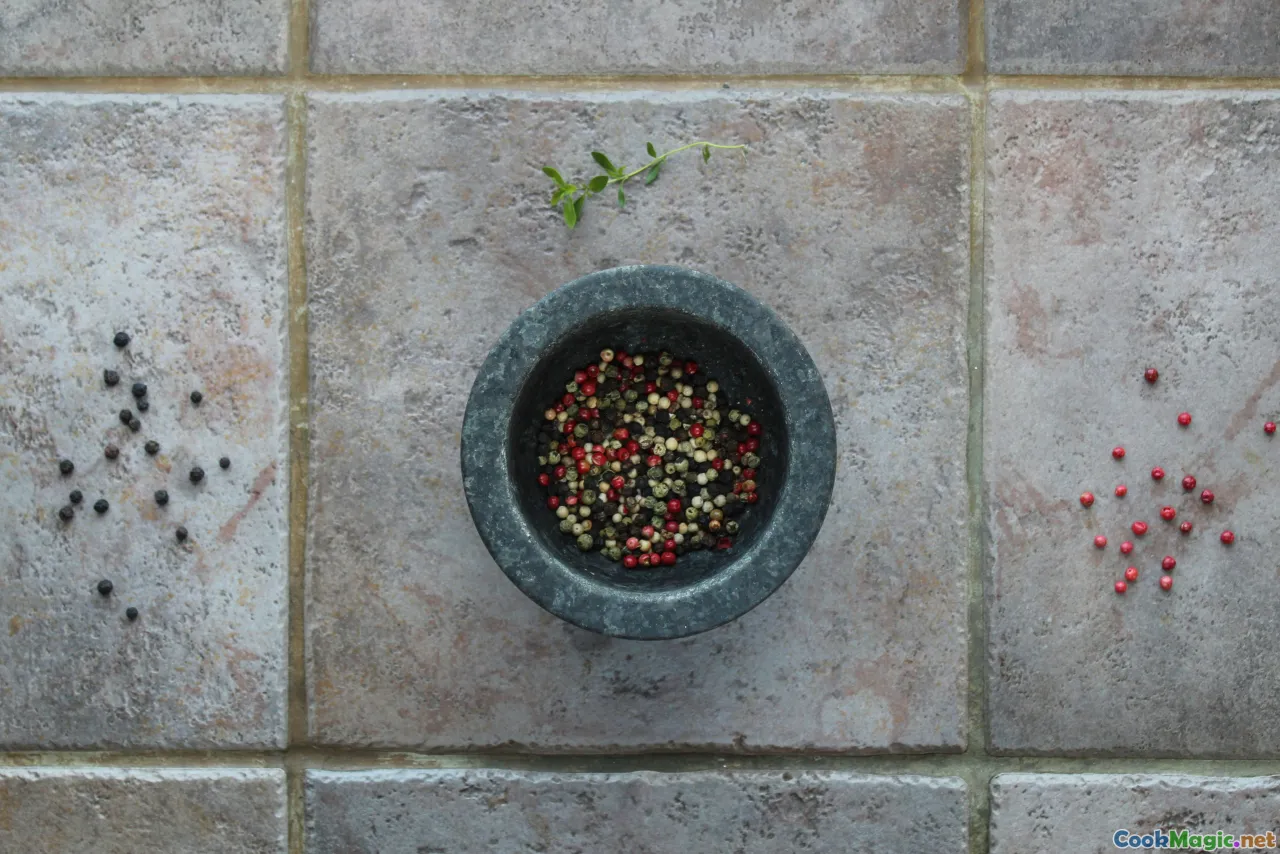
The wind in Ulaanbaatar has a habit of stealing scent. It slips between high-rises and gers with equal confidence, mischievous as it plucks at your sleeves and tugs aromas into the great, cold blue. Yet on winter nights, when someone cracks the lid on a steaming pot of buuz and the heat fogs the window, the wind is forced to retreat. The room fills with a breathy sweetness of lamb fat, a salty tickle of tea, and somewhere in the background—so soft you might miss it if you weren’t paying attention—the warm, fennel-like hum of caraway seeds. In Mongolia, flavors announce themselves with quiet authority, and the spices that matter most don’t shout. They keep pace with the landscape: spare, precise, elemental.
I came to this realization in a ger outside Kharkhorin, where a herder named Ganzorig showed me how to press the edge of a tea glass into a heap of seeds, splintering their hulls just enough to wake the perfume. He didn’t own a mortar and pestle; he didn’t need one. The seeds released an aroma of toasted rye bread and anise, and when we folded them into the dumpling meat, the filling took on shape—as if the spice had drawn an outline around the lamb’s natural sweetness. That night, I slept with a memory of flavor that was both hushed and unforgettable.
This is the paradox of Mongolian cuisine for many cooks trained in louder pantries: most dishes lean on salt, smoke, and fat rather than an array of spices. But when spices do appear, they are essential, not ornamental. They come to the table shaped by Central Asian trade routes, by Chinese markets in Inner Mongolia, by Russian shelves in Ulaanbaatar, and by the measured touch of herders who use just enough to keep the meat honest. These are the five spices that, to my palate, define Central Asian flavor as it intersects with Mongolian cooking: caraway seed, cumin, black pepper, coriander seed, and Sichuan pepper. Each tells a traveling story. Each reshapes a familiar dish by just a degree or two—like turning your face slightly to feel the full force of the sun.
The wind-swept pantry: spices across the steppe

The Mongolian pantry reflects a life lived in motion. Nomadic traditions prioritize durability over dazzle, caloric density over complication. Salted milk tea, cured meat, dried curds, and grain—these are the anchors. Spices, when present, arrive through networks that bend around mountains and deserts.
The Silk Road’s eastern fingers fed one of those networks, running from Kashgar and Hami through the grasslands of Inner Mongolia and into the markets of Ulaanbaatar. From the west and north came another stream: Russian and Kazakh traders moving seed-filled sacks across the Altai. Even now, a walk through Narantuul Market—the famed Black Market in Ulaanbaatar—tells this braided story. You pass coils of dried noodles, sacks of flour, and then you catch a stall where the perfume shifts: cumin’s dusty warmth; the citrus whisper of coriander; and, on good days, the numbing cedar of Sichuan peppercorns. The vendor slides a shovel into each sack and weighs out a half-handful as if measuring the wind.
Mongolian home cooking has never been about thick layers of spice. Rather, the essential Central Asian spices play targeted roles: they lift the gaminess of mutton without erasing it; they give chewy dumplings contour; they add sparkle to the deep calm of animal fat and hot stones. These five are not the only spices found in Central Asia, but they are the ones I consistently reach for when cooking Mongolian dishes at home—and the ones I see and smell, again and again, in gers, restaurants, and market stalls from Sükhbaatar Square to the southern edges of the Gobi.
Essential Spice 1: Caraway seed — the dumpling’s whisper
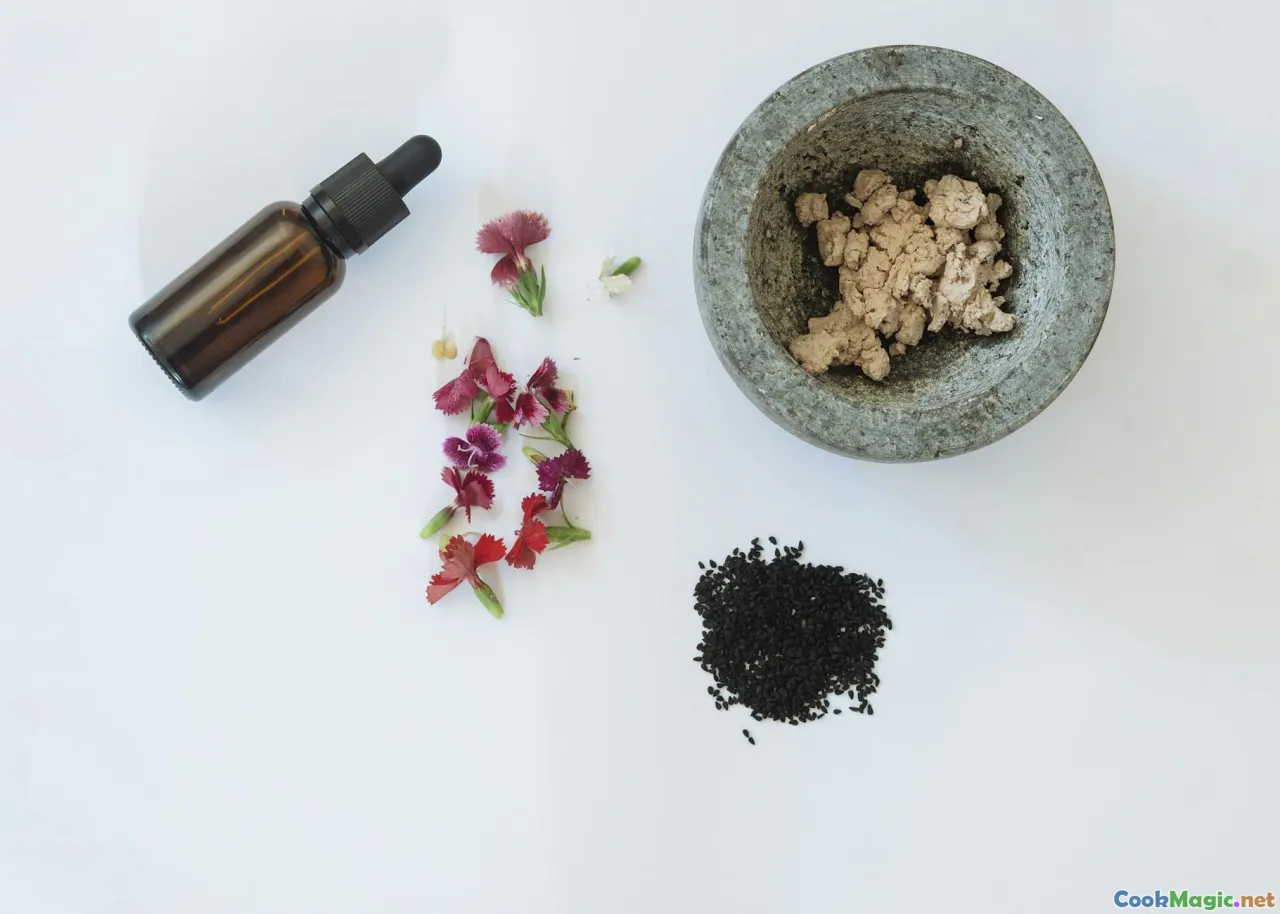
If there is a spice that tastes like a Mongolian winter kitchen, it is caraway. Not cumin, not fennel, but the trident-shaped seed whose aroma lands somewhere between sweet rye bread and a cool walk through an alpine meadow. In dumplings—buuz, khuushuur, and smaller bansh—caraway does not dominate so much as delineate. It frames.
Picture the preparation: a mound of minced mutton on a low table, fat marbling the meat like frost. Coarse salt. A chopped onion that will cook translucent and sweet. The hand hesitates over pepper, reaches instead for a small jar of brownish seeds. The first time I learned to crush caraway for buuz, my host used the base of a tea glass, rolling it over a spill of seeds on the butcher block with a press-and-twist motion until they cracked, releasing a warm breath of aroma. Ground too fine, caraway can go medicinal. Cracked just enough, it amplifies and clarifies.
Taste a buuz filling without caraway, and you’ll find it clean but slightly blunt. Add half a teaspoon per half-kilo of meat, and the flavor turns articulate. There’s a clear high note—something you might call spearmint’s cousin—and a gentle sweetness that rounds out the salt. The aftertaste is the most telling: a lingering echo of bread crust and hay.
Cultural role: caraway’s presence in dumplings is a quiet nod to a broader Central Asian language of seed spice. Where Uzbek cooks might reach for coriander, Mongolian hands often curve around caraway. It harmonizes with the region’s hearty grain traditions (think of rye breads in the north) and with the grassy sweetness of pasture-raised sheep. For the cook at home, caraway is also forgiving; even a pinch can make a difference.
How to use it in Mongolian dishes:
- Buuz and bansh: 1–1.5 teaspoons lightly crushed caraway seeds per kilogram of fatty mutton or beef, along with 2 teaspoons salt, finely minced onion, and a few cloves of garlic. Mix with water until the meat becomes tacky.
- Khuushuur: a more aromatic variation on fried dumplings uses 1 teaspoon caraway plus 1 teaspoon black pepper per kilogram of meat. The hot oil teases out the spice’s sweetness.
- Tsuivan: add 1 teaspoon of crushed caraway to the meat and vegetable base (cabbage, carrots) before tossing with noodles. The heat coaxes out an anise-like perfume that laces the steam escaping the wok.
There is a temptation to replace caraway with fennel or even anise, but they aren’t interchangeable. Fennel runs sweeter, with a licorice bloom that can crowd delicate lamb fat; anise turns perfumed too quickly. Caraway is the one that speaks steppe.
Essential Spice 2: Cumin (zira) — smoke on the border

Cross the invisible line from Ulaanbaatar into the neighborhoods where Inner Mongolian and Xinjiang grills ignite at dusk, and cumin greets you before the cooks do. Clouds of smoke roll off iron racks, latticed with skewers of lamb whose fat sizzles and spits like the crackle of distant ice. The air tastes brown and warm, dusted with cumin’s unmistakable melody: earthy, bitter-sweet, and deeply, compellingly savory.
Cumin is not historically the core of Mongolian home cooking in the same way it is in Xinjiang, Kazakhstan, or Uzbekistan. But modern Mongolian urban food culture, especially around grills and street food, has embraced it with enthusiasm. You taste it in yang rou chuan-style skewers sold in Ulaanbaatar’s night markets, in lamb ribs with blistered edges at restaurants near Peace Avenue, and in the spice packets sold near the entrance of Narantuul Market—cumin front and center, often speckled with chili flakes and toasted sesame.
What cumin does on the steppe: it makes sense of smoke. With khorkhog (mutton cooked with hot stones) or when grilling over wood, cumin’s bitter warmth knits together the resinous character of the fire and the sweetness of the meat. It also acts as a bridge between Mongolian cooking and the broader Central Asian palate, tying local dishes to a landscape of samsa, laghman, and plov.
How to use it in Mongolian contexts:
- Lamb skewers: toss 1 kilogram of lamb shoulder cubes with 2 teaspoons toasted, coarsely ground cumin; 1 teaspoon coriander seed; 1 teaspoon coarse salt; 1 teaspoon black pepper; 2 tablespoons neutral oil. Skewer, rest 30 minutes, grill hot. Finish with a pinch more cumin and flaky salt.
- Khorkhog rub: mix 2 teaspoons cumin, 1 teaspoon black pepper, 1 teaspoon coriander seed, and 1.5 teaspoons salt. Massage into bone-in mutton before layering with hot stones. The steam pulls the aromatics deep into the meat.
- Tsuivan variation: bloom 1 teaspoon cumin and 1 teaspoon coriander in oil with garlic and onion before adding meat and vegetables. The resulting noodle dish carries a point of view—a little Silk Road swagger—without overshadowing the Mongolian bones of the dish.
Cooks’ note: whole cumin seeds should be toasted until they just shade darker and become perfumed—no more than 90 seconds in a hot, dry pan. Grind while still warm and use promptly; stale cumin tastes dusty, and on the high plains, dust has enough representation already.
Essential Spice 3: Black pepper — a modern spark in the ger
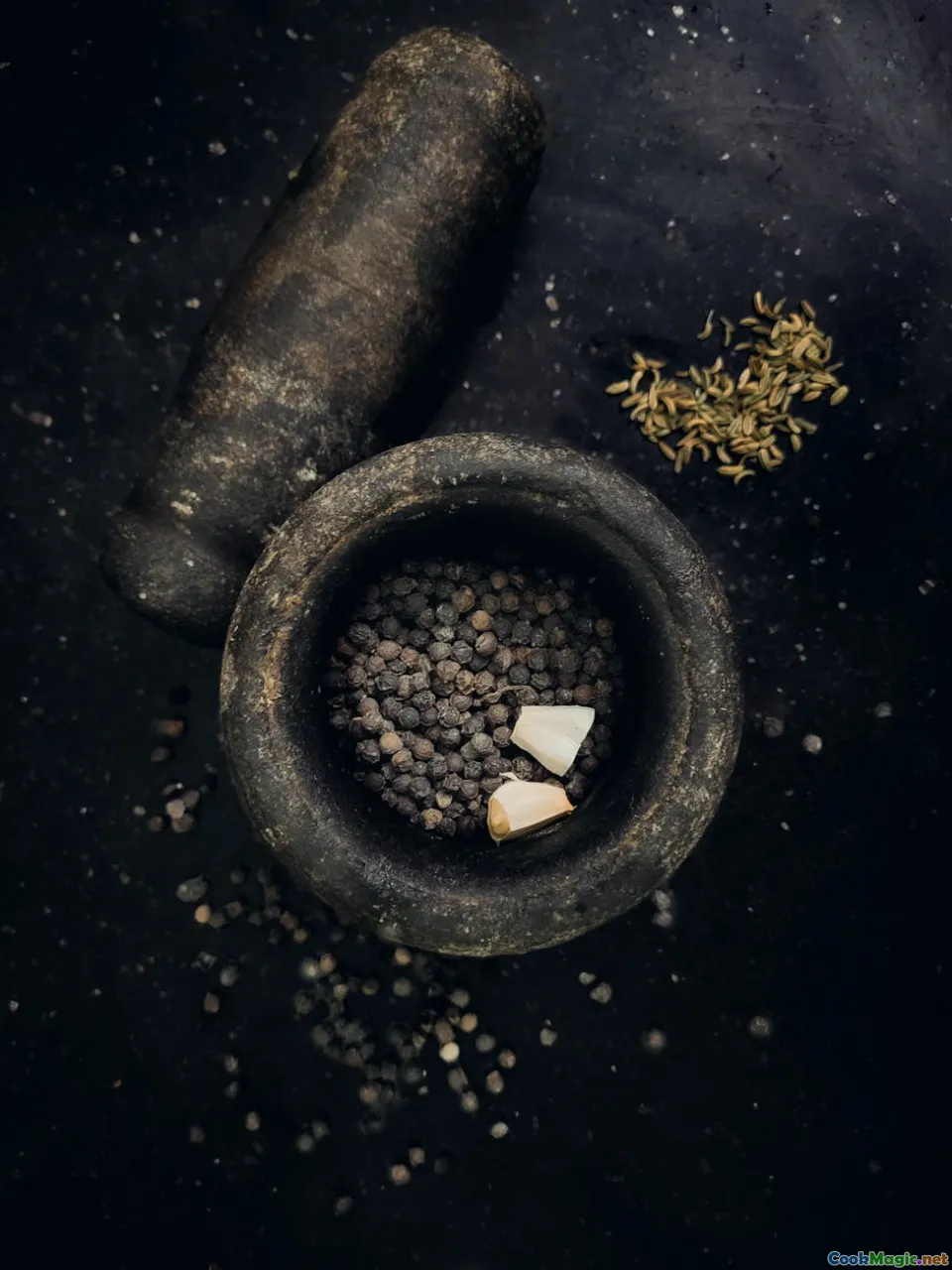
Black pepper’s story in Mongolia is newer than salt’s and older than neon lights. Through Russian and global trade, pepper became a pantry default in urban kitchens, and it now appears in many dumpling fillings, in meat soups, and on simple grilled chops. If caraway is the Dumpling Whisperer, black pepper is the Spark.
Pepper is less about perfume and more about sensation: a prickle on the tongue, a bright, piney lift that sharpens fatty meats. In a minimalist cuisine, that prickle is everything. I learned this from a grandmother in Bayanzürkh District who kept a small porcelain dish of freshly cracked pepper on her counter and dashed it over bowls of bansh soup as if salting a thawing road. The broth—beefy, fatty, honest—woke up with a sigh.
Using pepper well is about timing and texture:
- Cracked, not powdered: for buuz and khuushuur, use a coarse crush so the pepper retains structure in the heat. Powder can disappear into the meat; cracked pepper leaves tiny blooms of heat.
- Finish with a flourish: soups like guriltai shul (noodle soup) and bansh shul benefit from a last-second twist of the grinder. Pepper’s volatile aromatics fade with long cooking.
- Balance fat: with khorkhog, pepper does a small miracle: it’s a handshake between the lamb’s sweetness and the stones’ mineral smoke.
Suggested ratios:
- Dumpling filling: 1–2 teaspoons coarsely cracked pepper per kilogram of meat, alongside salt, onion, garlic, and caraway or coriander.
- Khorkhog: 2 teaspoons cracked pepper for 2 kilograms of meat, added before the stones go in and again on top when serving.
- Quick grill: lamb chops dusted with salt and a rain of pepper; seared hot; finished with a squeeze of lemon—an import, sure, but a welcome one.
Pepper’s flavor is global, but its effect in Mongolian food is particular: it keeps heavy dishes nimble, gives the palate a foothold, and lets you eat one more dumpling than you planned.
Essential Spice 4: Coriander seed — citrus in a cold land
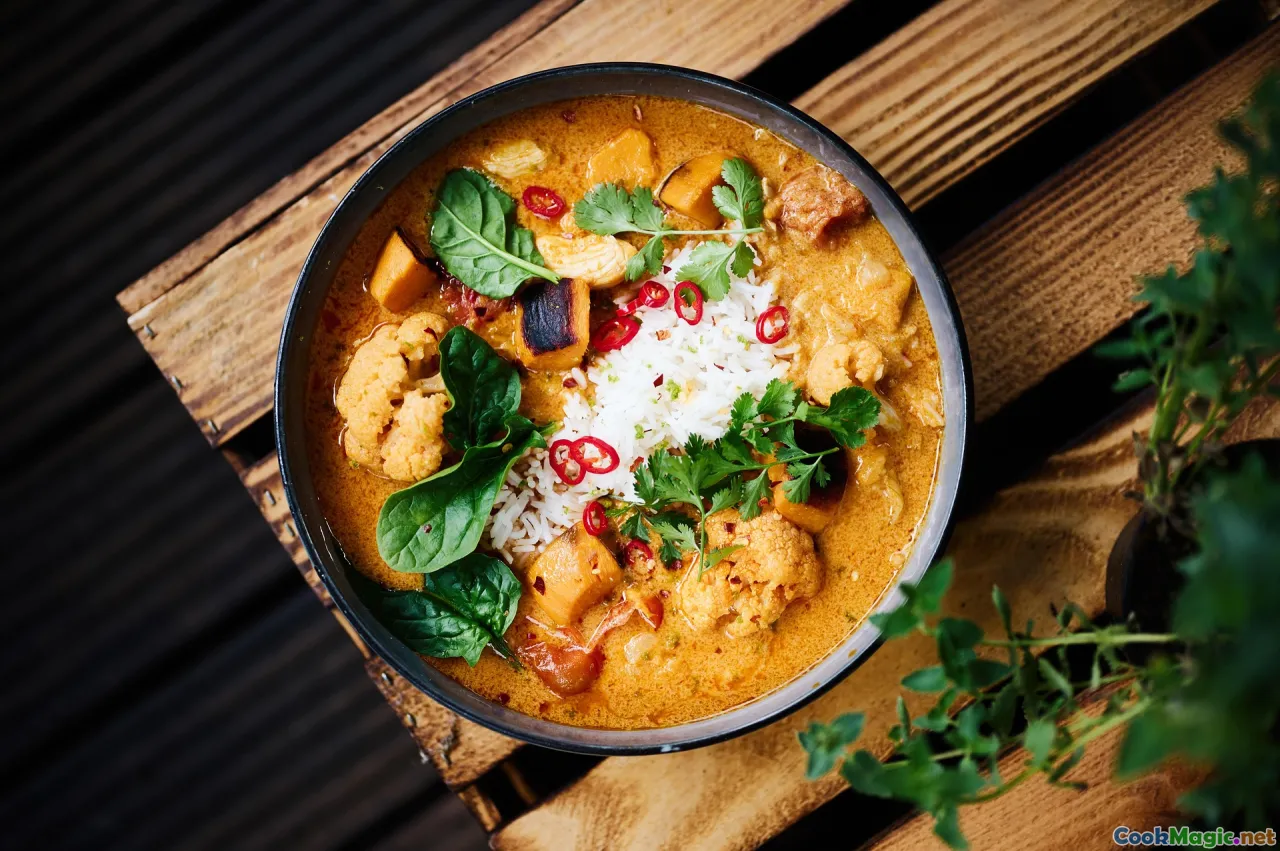
Coriander seed doesn’t get the headline in Mongolia, but it’s the background vocalist that fixes pitch. Crush a few golden spheres under your knife and the room snaps to attention with a lemony vapor, an echo of orange peel and toasted nuttiness. In Central Asia, coriander seed belongs to the same family of earth-toned, seed-forward cooking as cumin, and it pairs seamlessly with Mongolian staples.
Where coriander sings:
- Tsuivan: toast 1 teaspoon coriander seed with garlic and carrots before adding meat. The seeds crack and release oils that brighten the noodle’s heft.
- Khuushuur: for fried dumplings, coriander’s citrus tone cuts the richness of oil. A small pinch (½–1 teaspoon per kilogram of meat) delivers an aroma that rises with the steam as you bite through the blistered crust.
- Meat soup: in a brisket-heavy broth, infuse a muslin sachet of 1 teaspoon lightly crushed coriander seeds and 3–4 peppercorns for the last 20 minutes. The broth emerges a little sunnier, with no obvious spice fingerprint.
Coriander seed also becomes a connecting thread between Mongolian dishes and those across the border. You’ll find it in Uzbek non breads pressed with a chekich stamp, in Tajik soups, and in Xinjiang’s chuan spice mixes. In Ulaanbaatar’s multicultural neighborhoods, coriander seed is a quiet mediator: it makes lamb taste more lamb-like, in the best citrus-shadowed way.
Tip for cooks: lightly crush, don’t powder. Over-grinding risks bitterness and a muddy texture. If you must use ground coriander, look for freshly ground, nutty, almost honeyed aromas—not the flat dust that tastes of nothing.
Essential Spice 5: Sichuan pepper — the tingling edge of the steppe
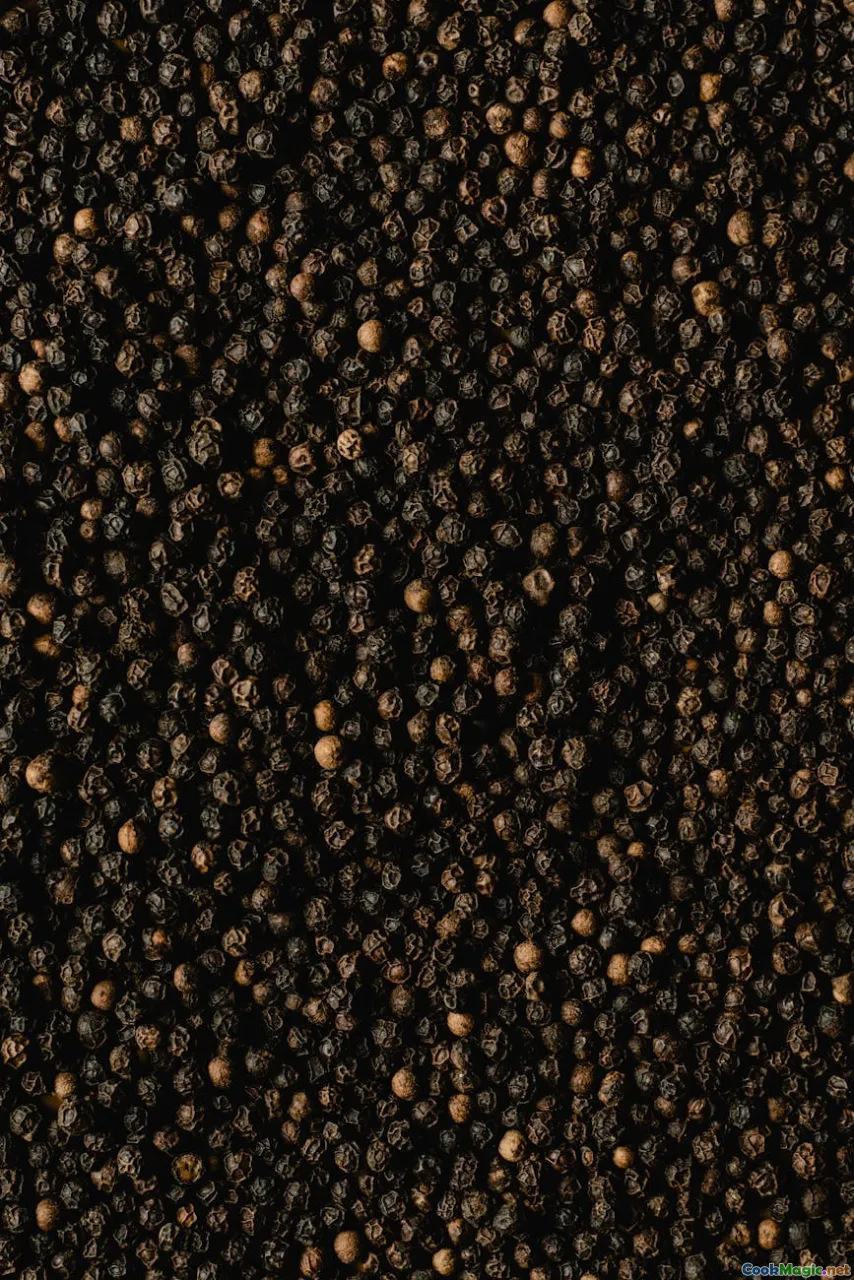
Sichuan peppercorns aren’t a historical staple of Mongolian nomad cooking, but Inner Mongolia’s markets and northern Chinese restaurants have left their mark. Spend a night in Hohhot or the east side of Ulaanbaatar where hotpot steam fogs the glass, and you’ll recognize the pepper’s signature: a tingling, lemony-bark buzz that feels like pine needles dusted with citrus.
Why it matters in a Mongolian context: Mongolian meat is rich, deeply savory, and sometimes funky in the most appealing way. Sichuan pepper’s numbing lift can turn that richness electric. Used judiciously, it adds a top note that cuts through fat while resetting the palate, much like taking a gulp of cold air after stepping out of a busy ger.
How to fold it in without changing the soul of the dish:
- Finishing salt for grilled meats: grind 1 teaspoon toasted Sichuan peppercorns with 1 tablespoon flaky salt. Sprinkle lightly over charcoal-grilled mutton ribs. The crackly, citrus-numbing finish keeps you reaching for another rib.
- Khorkhog citrus dust: pulse ½ teaspoon toasted Sichuan pepper with coriander seed and a strand of dried citrus peel; dust over the platter just before serving. It’s a bridge to the Chinese borderlands without steering the dish away from its Mongolian core.
- Noodle accent: for tsuivan, bloom a pinch (¼ teaspoon) with garlic and oil after the meat browns. Too much will steal the dish; just enough makes it hum.
A note on quality: fresh Sichuan peppercorns should smell floral and woodsy, not metallic. Reddish husks are what you want, with most black seeds discarded. Toast very briefly—too long and the pepper turns bitter.
How to toast, grind, and keep spice alive on the steppe

Spices behave differently in Mongolia’s high, dry air. Aromatics rush off the surface of ground spices faster; stoves run hot; winter’s anxieties hover around every pan. Technique matters.
A step-by-step approach:
-
Toast whole. Place seeds (caraway, cumin, coriander, Sichuan pepper) in a dry, heavy pan over medium heat. Shake occasionally. As soon as a halo of aroma rises—caraway turns bready, cumin earthy, coriander lemony, Sichuan pepper floral—pull them off. Usually 45–90 seconds. Dark flecks mean you’re close to burning.
-
Crack, don’t pulverize. For dumplings and soups, use a rolling pin, the base of a tea glass, or a mortar to crack seeds. Powdered spices can muddy textures and lose perfume quickly. The goal is to open the door to the oils, not knock down the house.
-
Bloom in fat. Drop cracked spices into hot oil or rendered lamb fat until the scents lift, 10–20 seconds, then add aromatics (onion, garlic) and meat. This extracts fat-soluble flavors and distributes them evenly.
-
Add a fresh finish. For soups and stews, reserve a pinch of freshly cracked pepper or Sichuan pepper to finish bowls. The contrast between long-cooked warmth and bright spice is the Mark of Care in Mongolian food.
-
Store smart. High altitude and heating systems parch the air; stash spices in dark glass jars with tight lids, away from direct heat. Buy in small amounts at Narantuul or your local market—enough for 2–3 months. If a spice doesn’t make your fingers fragrant when you rub it, it’s past prime.
Bonus ger trick: if you’ve cooked khorkhog and have a hot stone still warm, scatter your spices on a metal plate over the stone for a minute. The stone’s residual heat toasts gently and evenly, and your whole ger smells like an herbal bonfire.
Pairings and proportions: field notes for Mongolian dishes
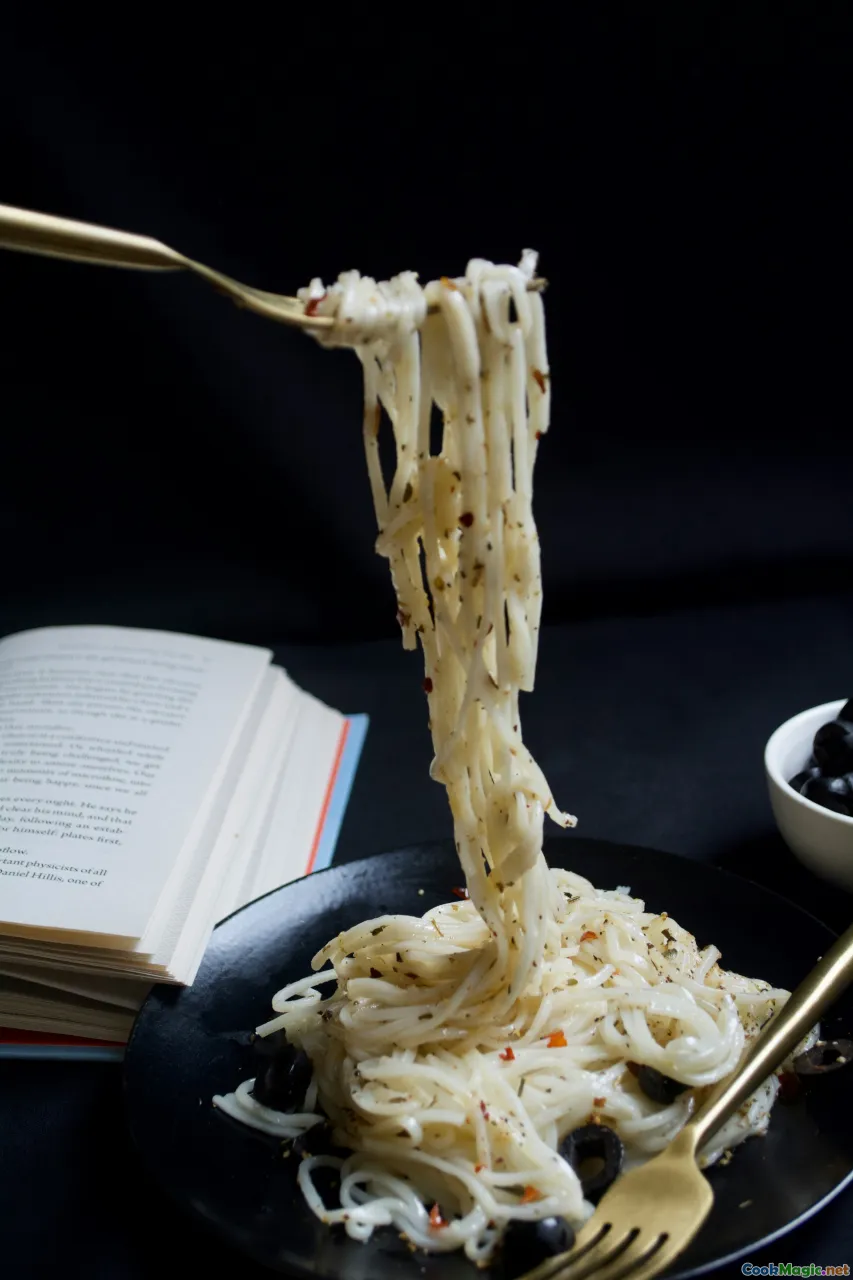
For cooks who want to bring the Central Asian spice palette into Mongolian dishes without distortion, here are proportion guides and pairing instincts, honed from kitchens on windy nights.
-
Buuz (1 kg fatty mutton):
- Salt: 2–2.5 teaspoons
- Caraway: 1–1.5 teaspoons, cracked
- Black pepper: 1 teaspoon, cracked
- Onion: 1 medium, minced
- Garlic: 3–4 cloves, minced
- Water: 4–6 tablespoons, folded in until tacky
- Optional: ½ teaspoon coriander seed for a brighter profile
-
Khuushuur (1 kg beef-mutton mix):
- Salt: 2 teaspoons
- Black pepper: 1–1.5 teaspoons
- Cumin: 1 teaspoon, toasted and cracked
- Caraway: ½ teaspoon
- Onion: 1 medium
-
Tsuivan (serves 4):
- Meat: 400 g lamb or beef
- Spices: 1 teaspoon coriander seed + 1 teaspoon cumin, toasted and cracked; ½ teaspoon caraway
- Black pepper: to finish
- Vegetables: carrot, cabbage, onion
-
Khorkhog (2 kg mutton):
- Rub: 2 teaspoons cumin + 1 teaspoon coriander seed + 1–2 teaspoons black pepper + 1.5–2 teaspoons salt
- Finisher: pinch of Sichuan pepper salt over plated meat
-
Bansh soup:
- Broth sachet: 1 teaspoon coriander seed + 5–6 black peppercorns, simmered for 20 minutes at the end
Pairing instincts:
- Caraway loves lamb fat and onion; avoid overuse with beef-only mixes.
- Cumin needs fire—grill, wok, or hot stone—to bloom into its best self.
- Black pepper craves a finishing moment; think table grinder.
- Coriander seed is your citrus substitute in winter when lemons are scarce.
- Sichuan pepper is a highlighter pen; too much, and it’s scribbles.
A night in a ger: khorkhog and a handful of seeds
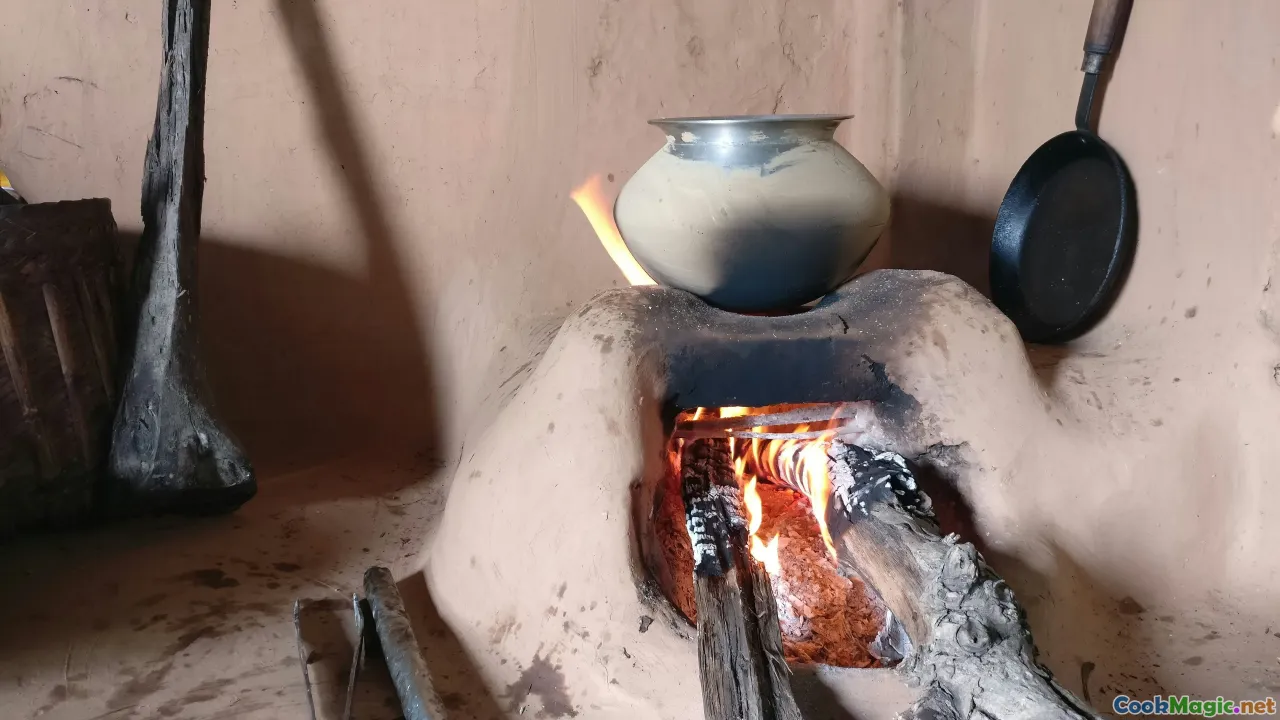
The khorkhog that changed my mind about spice started with a question: which matters more—the stones or the seeds? In a ger near the Tuul River, my host, Tsetsegmaa, shrugged and handed me a bowl of raw onions and a jar of cumin. “Both,” she said. “But watch what the seeds do to the steam.”
We layered the bottom of a heavy pot with fist-sized stones heated until they blushed. Meat went in—mutton shoulder, dense with tallow that tugged at the cold air when it melted. Salt rained. Then came cumin and coriander, a modest handful each, thrown not into the meat but onto the hot stones. The seeds hit and skittered, flashing fragrance. We piled more meat, more salt, a few carrots and potatoes, and then sealed the lid with a wet cloth and weight.
As the pot shuddered and sang, spice and stone had their conversation: coriander’s lemony breath rising quick and bright, cumin’s brown warmth laying down a bassline, and the stones returning it all with mineral echo. When the lid finally came off, a plume of steam rolled across the ger ceiling, and inside that cloud was a smell like no other—meadow, smoke, lamb, and the haunting near-mint of caraway someone had tossed in late.
We ate with our fingers, the meat sliding from bone, the skin sticky with fat that cooled in brilliant, glassy sheets on the lips. On the table sat a small dish of freshly ground pepper and another of Sichuan pepper salt. I dipped once, twice. The numbing tingle unfolded like a small laugh, and suddenly the next bite tasted new. The room dimmed with comfortable fatigue; the baby slept; the dogs drifted in and out; the wind rattled the door but couldn’t cross the warm threshold of spice.
That night taught me an argument for moderation. The spices didn’t tell the story; they underlined the nouns.
What changes across the map? Mongolia vs. Xinjiang vs. Kazakhstan

Central Asia is not monolithic, and those five spices travel with different accents.
-
Mongolia: sparing, elemental. Caraway in dumplings is common, black pepper used as both ingredient and finish. Cumin and coriander appear most readily in grilled lamb and urban dishes influenced by neighboring cuisines. Sichuan pepper comes in through hotpot and Inner Mongolian restaurant culture.
-
Xinjiang (China): bold, spice-forward. Cumin moves from accent to protagonist, anchoring lamb skewers, stews, and noodle dishes. Coriander seed and leaf both find homes; Sichuan pepper shows up less than you’d think outside of specific Han-influenced menus, but the region’s peppercorn use is still present in restaurants that bridge cuisines.
-
Kazakhstan and Kyrgyzstan: cumin, coriander, black pepper, and sometimes barberries in rice dishes like plov; the seed palette overlaps heavily, though caraway steps back behind coriander and cumin. Grilling culture leans toward cumin-heavy rubs.
The thread that runs through all: a respect for meat’s intrinsic flavor and a preference for seeds that amplify rather than cover. What shifts is the volume and the company—a dusting of cumin versus a crust; a whisper of caraway versus none; a flirt with Sichuan pepper that, in the right hands, turns into a long-distance romance.
Where to taste it in Ulaanbaatar and beyond

If you want to smell and taste these five spices in the wild, make a short itinerary.
-
Narantuul Market (Black Market): Follow your nose to the spice aisle. Look for whole seeds in unassuming sacks. Ask the vendor to toast you a few in a dry pan they often keep nearby for demonstration. Buy small amounts; freshness matters.
-
Street skewers near Peace Avenue and the State Department Store: In the evenings, carts set up with hot grills. Watch the cook shower skewers with cumin and pepper as they turn; feel the spice smoke catch in your scarf. The cumin-oil sizzle is the night’s signature.
-
Family-run buuz shops: Small, fluorescent-lit rooms where a mountain of dumplings marches across the counter. The filling tends to be straightforward—salt, onion, maybe pepper—but ask if they use caraway. Some proudly do, especially in winter.
-
Hotpot restaurants in the east of the city: Broths perfumed with Sichuan pepper and whole spices, a different tradition but one that has seeded many home pantries with that citrus-numbing crackle.
Beyond the city:
- Aimags like Arkhangai and Övörkhangai: If you’re lucky enough to eat in a ger, bring a small gift of spices—whole, fresh, in glass. Offer them with tea; accept what you’re offered in return. Watch how your hosts use them: gently, sparingly, with intention.
Build your Central Asian spice kit at home

For cooks outside Mongolia who want to capture the steppe in their kitchens, here’s a kit that respects Mongolian restraint while opening the door to Central Asian warmth.
Core five (whole, always whole if possible):
- Caraway seed: look for glossy seeds with a clear rye-bread aroma.
- Cumin seed: long, narrow, tan seeds that smell like warm dust and hay.
- Black peppercorns: firm, wrinkled, fragrant; avoid gray dust.
- Coriander seed: golden spheres with a lemon-wood scent.
- Sichuan peppercorns: reddish husks, floral and piney; avoid black, gritty seeds.
Companions that play well in Mongolian contexts:
- Bay leaves: not traditional in dumplings, but a single leaf in meat broth is welcome.
- Chili flakes: for Xinjiang-style skewers at home when you want mild heat.
- Sesame seeds: to finish grilled lamb with a nutty pop.
Tools:
- Heavy skillet for toasting.
- Mortar and pestle or a sturdy rolling pin.
- Tight-lidded glass jars.
Storage and rotation:
- Label everything with purchase dates.
- Keep jars away from your stove’s heat plume.
- Use pepper and cumin within 3 months; coriander and caraway within 4–6 months; Sichuan pepper within 3 months, or freeze to prolong vibrancy.
Practice dish progression:
- Start with buuz seasoned with caraway and pepper only. Learn the baseline.
- Grill lamb skewers with cumin-coriander rub. Feel the smoke-spice synergy.
- Make khorkhog-inspired stew in a heavy pot with pepper and a finishing dust of Sichuan pepper salt. Learn restraint.
- Cook tsuivan with a coriander-cumin bloom. Taste how noodles carry seed perfume.
With repetition, you’ll internalize what Mongolian cooks have long known: the right seed at the right moment turns sustenance into memory.
The little things spices teach us on the steppe
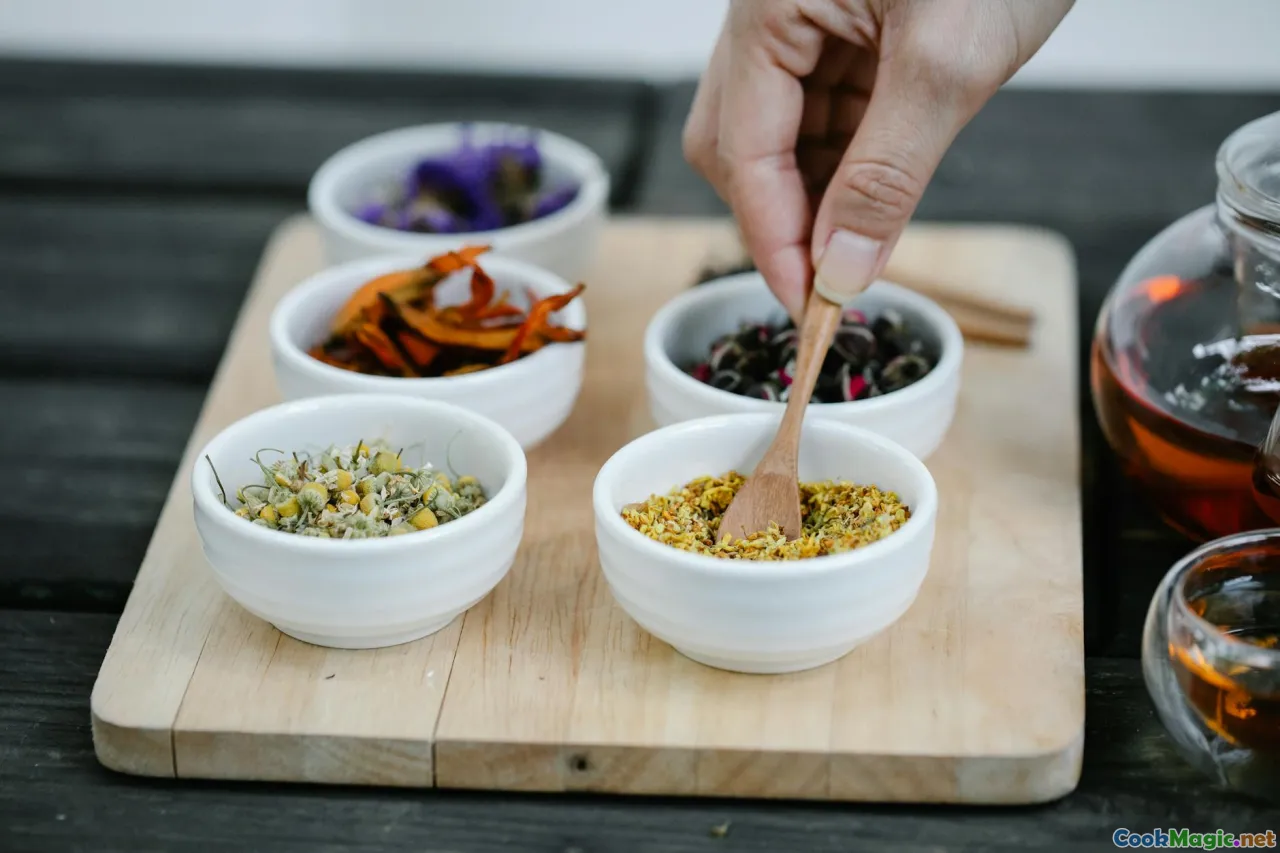
I think often of a bowl of suutei tsai, the salted milk tea that opens and closes days in the ger. It carries no spice by default—just tea, milk, salt, maybe a knob of clotted cream. On particularly raw mornings, I’ve watched cooks warm their palms around the bowl and inhale as if the steam itself had weight. In that moment, you understand why the Mongolian kitchen uses spice like punctuation, not script. The tea needs no correction.
Spices, when they do appear, rewrite a line or two with care:
- Caraway tells you where the lamb begins and ends.
- Cumin turns smoke into flavor rather than simply evidence of fire.
- Black pepper extends a dish’s life on the tongue.
- Coriander makes winter feel half a season shorter.
- Sichuan pepper lets fat dance.
I’ve carried seeds in my pockets across the city—little brown commas on my fingers after crushing them into a pot, oils warming in my skin as I walked home through the wind. Cooking Mongolian food with Central Asian spices is less a change of identity than an acknowledgment of a long conversation across borders and time. It’s an agreement to keep flavors honest while recognizing that a small pinch can shape memory, that a crack of a seed can soften the edge of cold, that the right aroma can hold a room of people in its gentle, fragrant gravity.
And when the wind barges in again, you can lift the lid, let the steam billow—not to chase the wind away, but to feed it something worth carrying.









